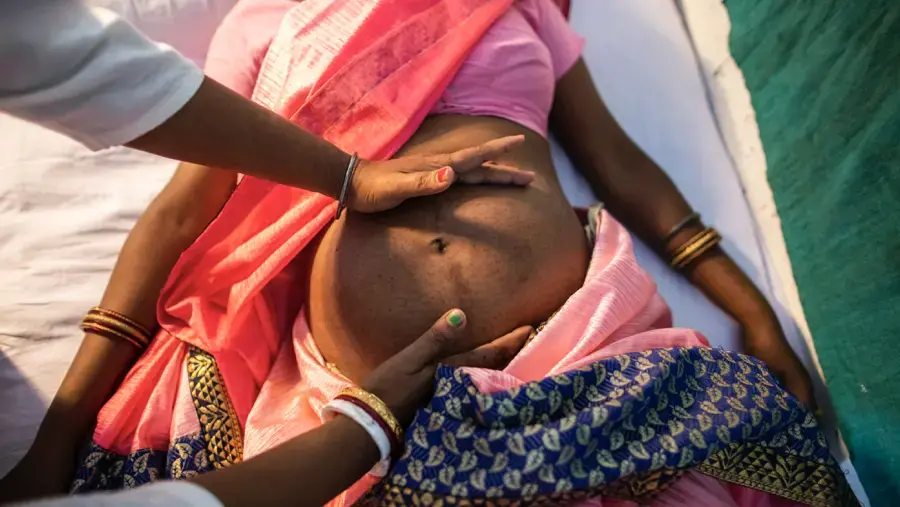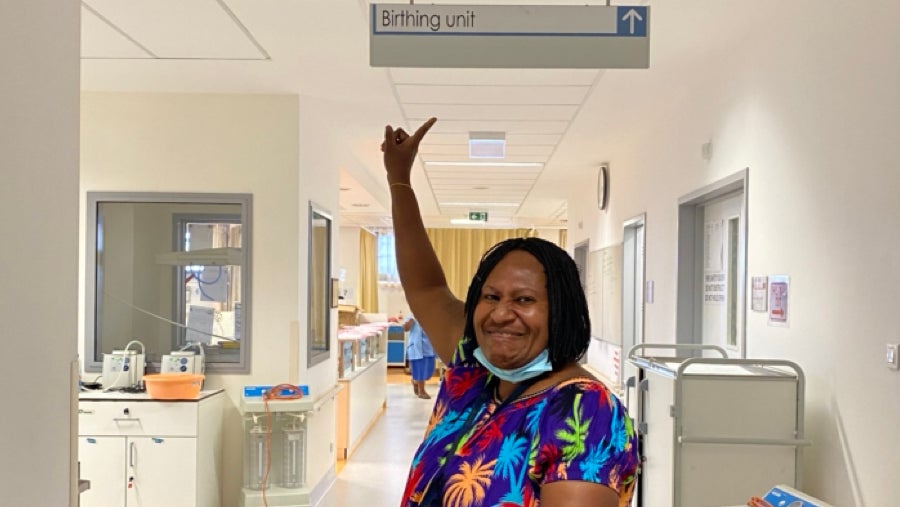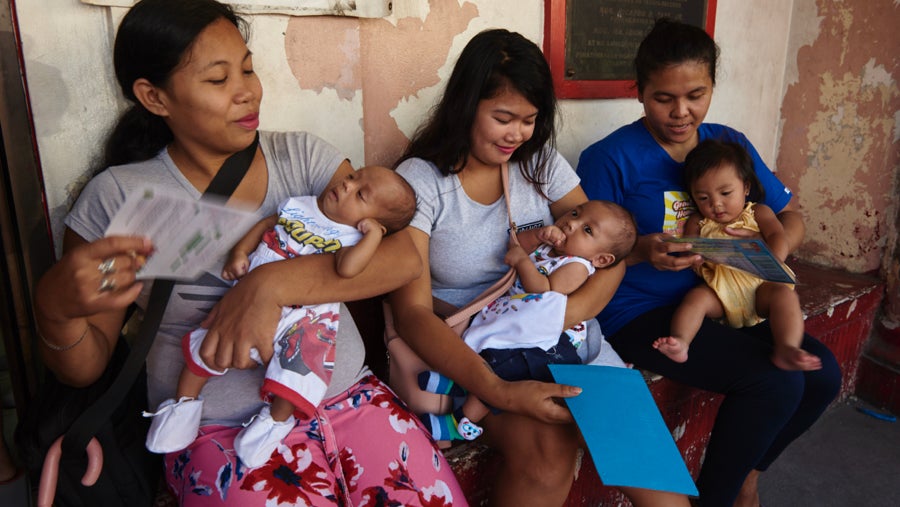Midwives - an investment that saves lives
Midwives - an investment that saves lives
Today we celebrate midwives in every community and we express our gratitude for their commitment, their competence, their wisdom and their kindness. Every one benefits directly and indirectly from trained midwives delivering quality care. On International Day of the Midwife, let’s appreciate the pivotal role midwives play in making the world a safer place for mothers, for babies, for everyone.
As the International Confederation of Midwives celebrates its 100th anniversary, we also celebrate how far we have come. Yet, across Asia-Pacific, we still have a shortage of over 200,000 midwives. Better policies and greater investments are needed that will allow midwives to be educated according to international standards, to perform their full scope of practice, strengthen primary healthcare systems and provide a pathway to universal health coverage.
This collection of stories brings us into the lives of some inspiring midwives who are carrying on the century-old tradition of trained midwives delivering quality care. Today, and everyday, we celebrate them.
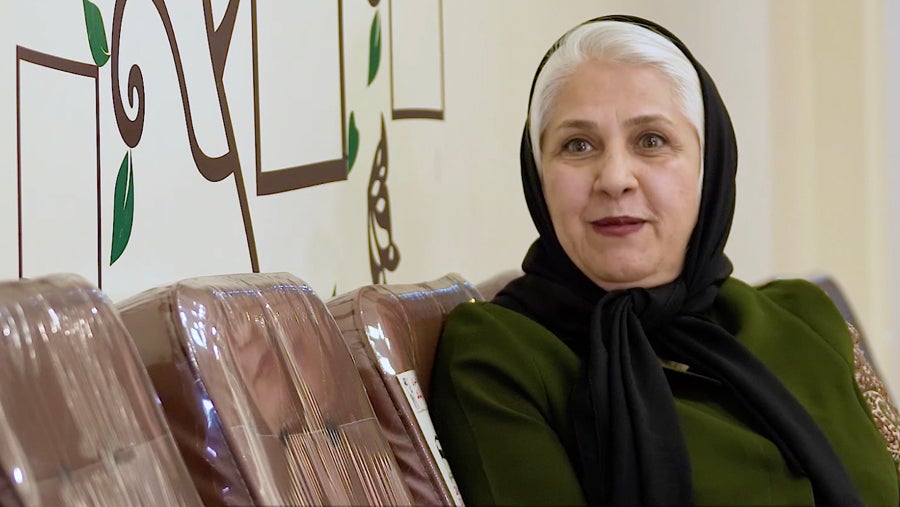
Iran: Pari Lotfipour has been a midwife for more than 40 years. With beaming eyes, she says, “As someone who started my career with love, I still have enough love to deliver babies for another 20 years.” ©UNFPA Iran
Papua New Guinea: Sister Aiva Pikuri is a Senior Midwife and Labour Ward Sister-in-Charge at the Provincial Hospital in Goroka, Eastern Highlands Province. She has been working in midwifery and sexual reproductive health for over 20 years and is a trainer for emergency obstetric care, newborn in-service training and upskilling of community health workers programme. ©UNFPA/ Breen Kamkong READ MORE
“It is one of the privileges of being a midwife; you can save a woman’s life.”
-Sister Aiva Pikuri, Papua New Guinea

Bangladesh: There are 46.7 million women of reproductive age in Bangladesh and not nearly enough midwives to meet the need for everyone to have a safe birth with only 53% births attended by a skilled birth attendant. Training more midwives to meet the current and forecast needs in 2030 is a top priority for the government of Bangladesh. Research shows that births are increasing nationally at health facilities where government diploma midwives are deployed. This is tangible evidence that when we deploy trained midwives, we can increase institutional delivery and improve outcomes. ©UNFPA Bangladesh
Asia and Pacific Region: “There is a broad recognition that without developing faculty who teach the programs, then you are not going to have quality education, and without quality education you are not going to have quality midwifery care,” says Rachel Smith from the Burnet Institute, an important implementing partner for UNFPA. During the pandemic she supported UNFPA APRO in developing and delivering a midwifery faculty development course online for educators in the region. “Our aim was to provide this professional development but also build a community of practice where they can share.” READ MORE
“Without quality education you are not going to have quality midwifery care.”
-Rachel Smith, Burnet Institute

Vanuatu: Midwife Jenny Shaw is all smiles after assisting another mother through a successful birth. ©DFAT

Indonesia: Midwife Nur Jannatul Ainy examines a pregnant mother at the Larangan Community Health Centre in Pamekasan, East Java Province. ©UN0579850/Ulet Ifansasti
Philippines: There are 28 million women and girls of reproductive age in the Phillipines and a chronic shortage of skilled birth attendents. Maria Teresa Padilla works as a midwife educator in the Philippines and leads the Association of Philippine Schools of Midwifery. During the pandemic, she attended the Faculty Development Programme, an online course to strengthen midwifery education, offered by the UNFPA Asia-Pacific Regional Office in partnership with the Burnet Institute. When she completed the course, Maria Teresa took the initiative to get it adapted and rolled-out through the Philippines Midwifery Association health networks in the Philippines. READ MORE
“We need to upgrade the quality and the competencies of our midwives."
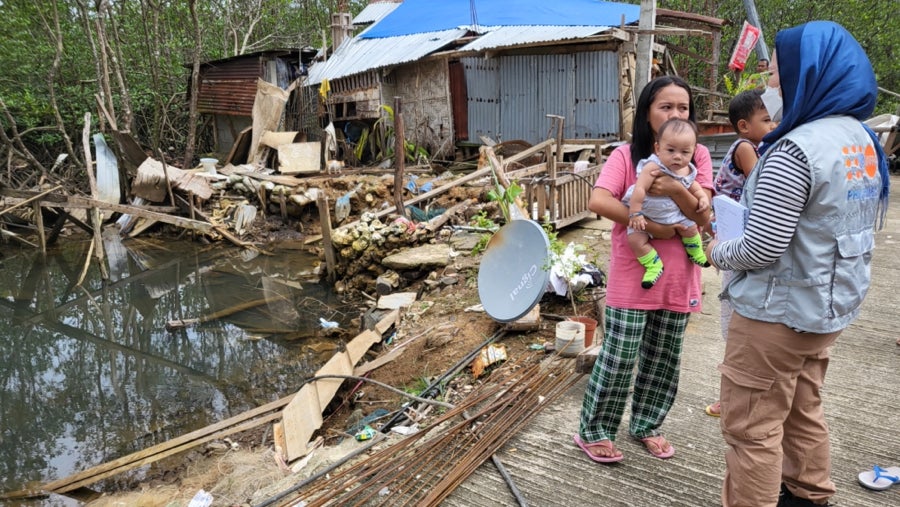
Philippines: As part of the humanitarian response to displacements from internal conflict in the Lanao del Sur province, UNFPA Philippines piloted cash assistance as an incentive for pregnant women to access sexual and reproductive health services. UNFPA and partners encouraged pregnant women to access antenatal care, facility-based delivery and post-natal care through a cash incentive and having pregnant women partner with a traditional birth attendant. The project increased the number of women attending a first antenatal care visit from 31 % to 96 % and a first postnatal care visit from 38% to 87%, compared to the number of women using these services prior to the introduction of the cash assistance. UNFPA continues to provide cash for pregnant women to access SRH in the Philippines, including in response to recent humanitarian emergencies because trained midwives are most effective when barriers are removed and women can access the care they need to have a safe birth.

Myanmar: A midwife shares a laugh with an expecting mother at an antenatal consultation in Ayeyawady. Only 60% of births in 2021 were attended by a skilled birth attendant so more needs to be done to train, mentor, deploy and distribute more SRMNAH health workers to the country’s hard-to-reach areas. ©UNFPA/Nowai Linn
Bhutan: “We want to have a midwife champion in every hospital or health facility, says Deki Pem. She is the Deputy Dean and Assistant Professor of Nursing and Midwifery Department at Khesar Gyalpo University of Medical Sciences of Bhutan. “We had high maternal mortality rates in Bhutan,” she says. “The government took the initiative and prioritized reducing maternal mortality and morbidity because many women and children were dying from preventable causes.” READ MORE
“We want to have a midwife champion in every hospital or health facility.”
-Deki Pem, Bhutan

Bhutan: A group of student midwives look carefully to learn the post birth protocols in a training with a newborn and mother. With the support of UNFPA Global Goodwill Ambassador Her Majesty the Queen Mother Sangay Choden Wangchuk, UNFPA has been part of a transformation in sexual and reproductive health services in Bhutan over the past 20 years. ©UNFPA Bhutan
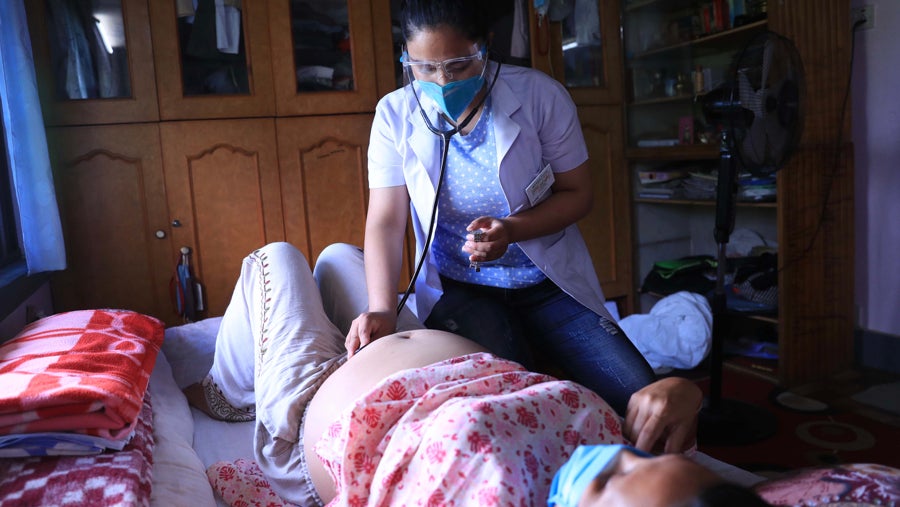
Nepal: Registered midwife Sabita Khadka. Midwifery is a new profession in Nepal, with the first midwifery graduates who completed their training only in 2020. Despite the newness of the profession, the policy environment for midwifery is strong but more needs to be done to strengthen the capacity of midwifery faculties through training, exchange visits and other faculty development programmes. ©UNFPA Nepal
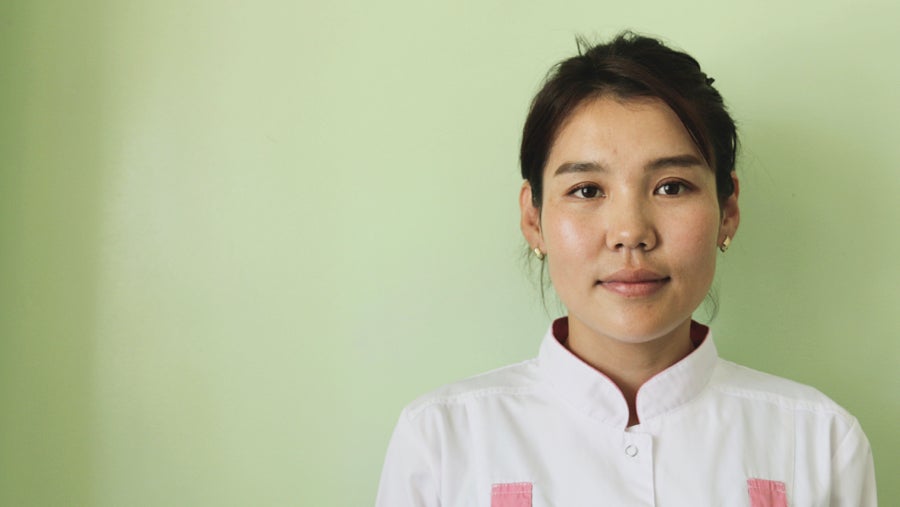
Mongolia: Batchimeg is a midwife at Mogod Village Hospital. Mongolia has a long history in midwifery, dating back to 1936 but there is a lack of recognition for the profession in the present day, and the country faces a number of challenges in ensuring that solid investment in policy and program support is available to develop the midwifery profession in the country. ©UNFPA Mongolia/Juyoung Lee
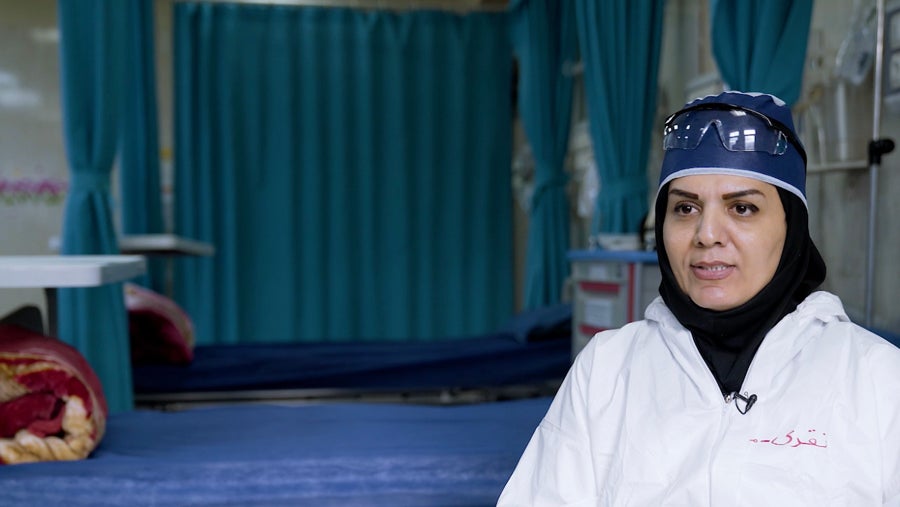
Iran: “As midwives, we are always ready for a crisis,” says Paymaneh Naghdi, a senior midwifery specialist. “But after helping a mother with COVID-19 give birth with complications, I realise that I am stronger than I thought I was.” ©UNFPA Iran
Bangladesh: Shakila Parvin, a midwife in the refugee camps of Cox's Bazar, helped a woman pregnant with twins deliver during heavy flooding that submerged the health facility's maternity ward, knocked out power and destroyed or damaged equipment and supplies. ©UNFPA Bangladesh READ MORE

Lao PDR: 64% of births were attended by a skilled birth attendant in Lao PDR in 2017. The government has made good progress related to the enabling environment for the profession of Midwifery, but there is more to be done on key policy and practical areas. ©UNFPA Lao PDR

Cambodia: Midwife Leng Sivmey Midwife works with an expectant mother during the practical session of an EmONC Training course in the National Maternal and Child Health Centre in Phnom Penh. The country is working on renewing the midwifery curriculum into a competency-based curriculum, and activities are underway to strengthen the national midwifery accreditation system. To continue to strengthen midwifery education, even in the pandemic, Cambodia is setting up an e-learning platform, adapting and utilising digital transformation opportunities to foster advancements into midwifery education. ©UNFPA/Nicolas Axelrod

India: Auxiliary Nurse MidWife Nisha Devi and ASHA worker Chandravati Devi vaccinating a newborn. The enabling environment for midwifery in India has solid foundations: midwife-led care is recommended for both mothers and newborns, and a national policy sets and defines a required competency framework for Maternal and Newborn Health but midwifery education and regulation policies are not yet based on International Confederation of Midwives (ICM) competencies and standards. ©UNFPA/India
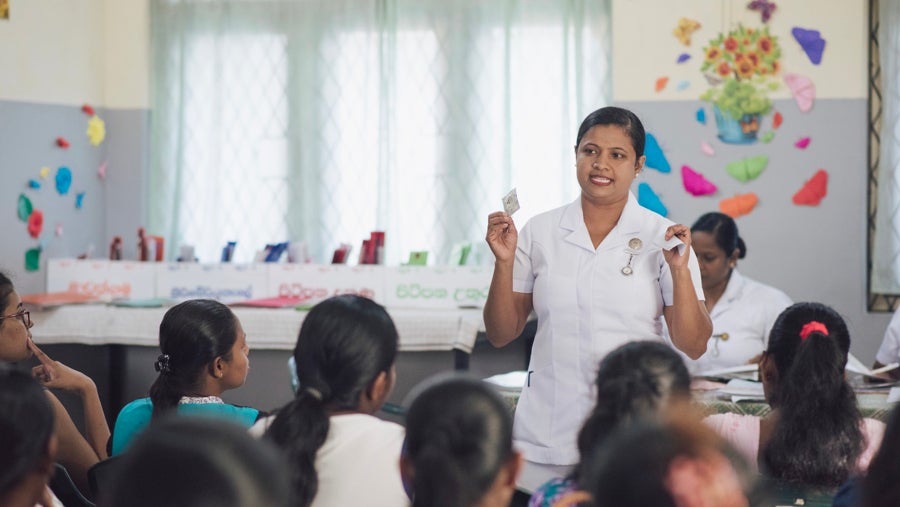
Sri Lanka: Teaching women and girls about reproductive healthcare options is a big part of a midwife's expanded role. When midwives are trained to international standards they can deliver 90% of women’s health needs and be a lifeline for other services like gender based violence support. ©UNFPA Sri Lanka

Cambodia: Rocham Nhon is just 17 years-old and this is her second pregnancy. At two months pregnant she received antenatal care, HIV and syphilis testing as well as counselling during integrated health outreach activities in Kechong commune of the Ratanakiri province. ©UN0403608/Antoine Raab

Samoa: Christina with her newborn Christopher gets some help from her midwife with breastfeeding technique. ©UNI105689/Giacomo Pirozzi
Learn more
The State of the World’s Midwifery Report - 2021
Global Standards for Midwifery Regulation
Policy Brief: Quality Midwifery Education needs to address Minimum Global Standards
COVID-19 Technical Brief for Maternity Services

